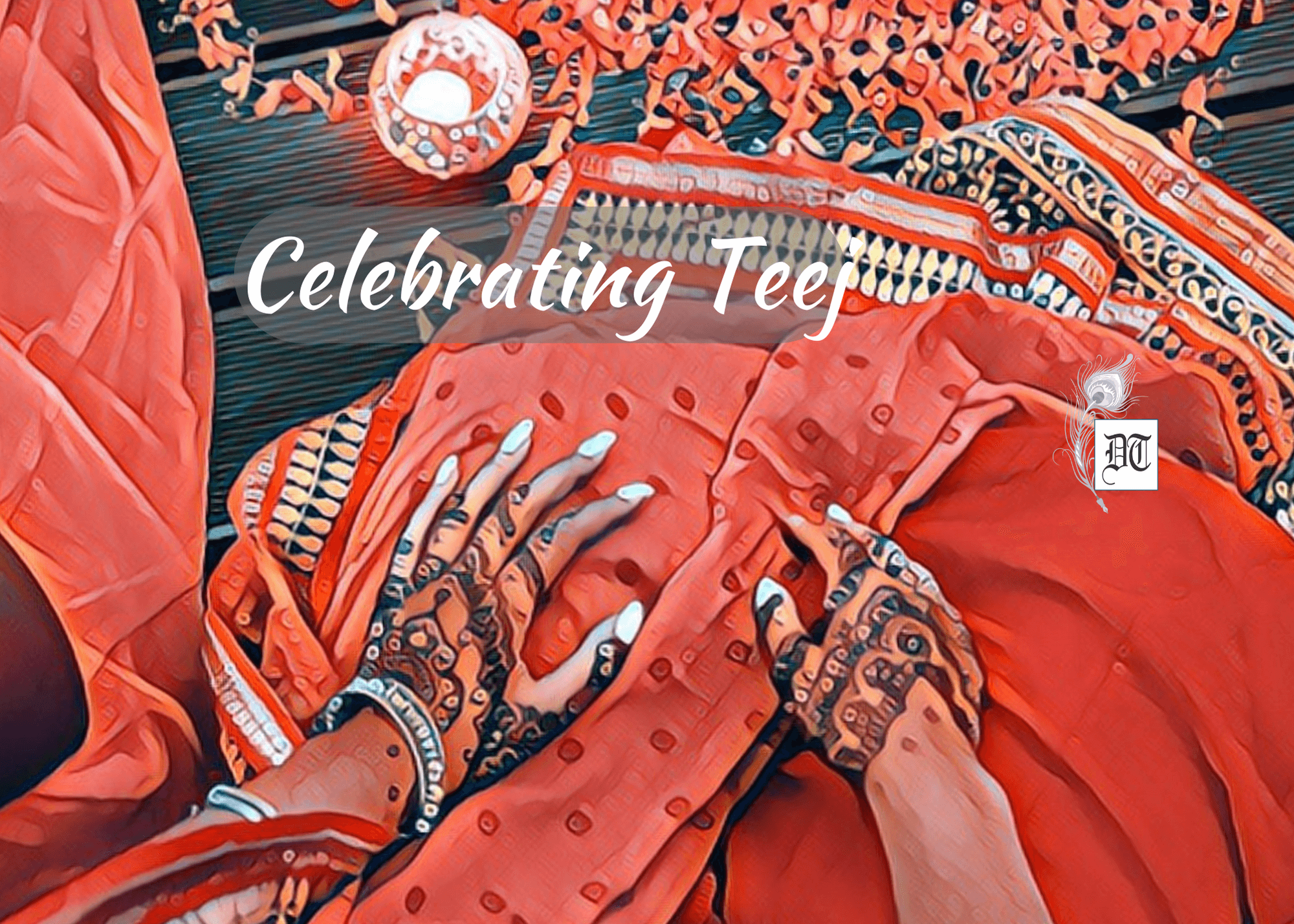Reading Time: 2 minutes
Northern India’s monsoon celebrations, such as Sawan’s showers and Teej celebrate love, devotion, and tradition with henna-painted hands, Ghewar, processions and more, states Madhuri, exclusively for Different Truths.

In July and August, after the sky rumbles and roars and the short outpourings bring down the temperature, and with it comes some celebration Though the showers arrive late in northern India, and the western parts of the state have already been severely inundated by freak weather conditions.
Presently, the political clouds are denser in the country with pre-election preparation. But as the Sawan shower cools and regenerates the landscape, and you float like a vagabond cloud on the whispering trails and smell the damp earth, the refreshing green and capture all the smells and colours in a warm embrace.
In the morning, the sky with lilac-coloured clouds looks sympathetic. The Aravalli is menacingly beautiful. The ground has already turned a slippery mudfish brown. In between showers, oil and grease built up on the tar roads hugging the boundaries of bajra fields. Yes, Sawan has checked in, and everything is glistening. The locals celebrate the monsoon festival of Teej with mehndi (henna) in traditional Lehriya saris. The sugary syrupy sweet cake (Ghewar) is also savoured. The women will sing folk songs, devour the delicious Ghewars, and tint themselves with rich colours of Lehriyas, lac bangles and henna. And celebrate Teej. There are many specks of colours on the roads.
Etymologically, the festival ‘Teej’ gets its name from a small red insect…
Etymologically, the festival ‘Teej’ gets its name from a small red insect called ‘Teej’ that makes its appearance during the monsoon. Teej has been observed for several years. According to Hindu mythology, this day marks the occasion of Maa Parvati coming to Shiva’s abode as his consort. Teej is symbolic of the love, devotion, and respect for a Hindu woman’s husband, as Ma Parvati underwent extreme penance over several births for 108 years to win over Lord Shiva.
Usually, green is the most favoured colour especially during ‘Hariyali Teej’. Those observing Teej get cosmetic items and jewellery for ‘Shringara’ from their parents. Women offer decorated coconuts to their relatives. They visit their maternal home and seek the blessings of the elderly and enjoy a get-together with family members. Teej dance imitates the beautiful dance of the peacock during the rain. Women take turns while singing in swings bedecked with flowers. Songs that are paeans to the monsoon season and marital happiness and others that are reminiscent of lovers’ woes of separation are sung, especially during Kajri Teej.
One of the main attractions of Kajari Teej … in Rajasthan is the procession wherein the Teej Goddess is taken through the city.
One of the main attractions of Kajari Teej of Bundi in Rajasthan is the procession wherein the Teej Goddess is taken through the city. The procession starts from Naval Sagar in an ornamented palanquin. Cultural folk music and dance performances are held in Bundi, Rajasthan. In Jaipur, the Teej procession starts from the royal palace at Tripolia Bazaar with camels, horses, and elephants to add to the magnum appeal. Hundreds of foreigners line the streets to witness the grand ceremony in pink city.
I gorge the gluttonous Ghewar and put some mehndi to be a part of the age-old tradition.
Picture design by Anumita Roy
















